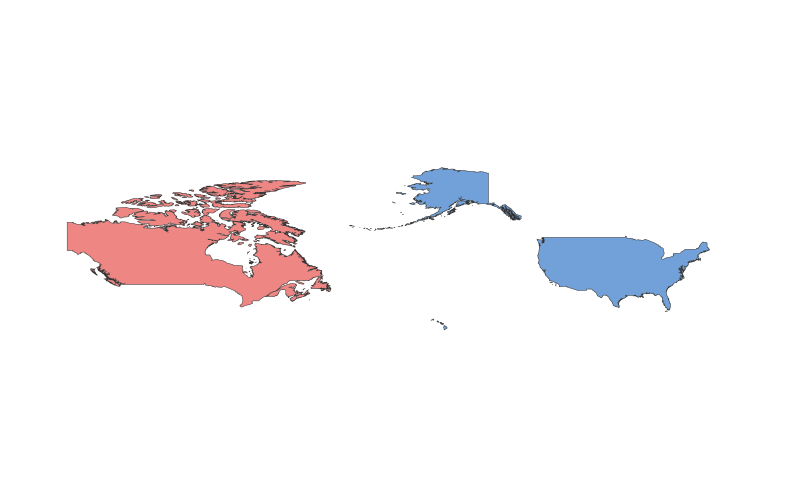Canada vs. United States: A Geographical Comparison

Comparison Table
| Category | Canada | United States |
|---|---|---|
| Location | Northern North America | Central/Northern North America |
| Size | 9.98 million km² (2nd largest) | 9.83 million km² (3rd largest) |
| Climate | Varied: Arctic to temperate | Varied: Arctic to tropical |
| Natural Resources | Abundant forests, freshwater, oil | Diverse: oil, coal, minerals |
| Urban Development | Highly urbanized (Toronto, Vancouver) | Major cities (NYC, LA, Chicago) |
| Transportation | Extensive road/rail networks; less dense | Highly developed highways/airports |
Description
Canada
Canada is the world's second-largest country by land area, known for its vast wilderness, multicultural society, and high quality of life. Its history is shaped by Indigenous cultures, French and British colonization, and modern immigration. The economy is resource-driven (oil, timber, minerals) with strong tech and service sectors. Culturally, Canada emphasizes bilingualism (English/French) and multiculturalism.
United States
The U.S. is slightly smaller than Canada but has a much larger population (331 million vs. 38 million). It boasts diverse landscapes, from deserts to rainforests, and is a global economic and cultural powerhouse. Founded through colonization and revolution, its economy is the world's largest, driven by technology, finance, and manufacturing. Culturally, the U.S. is influential in media, politics, and innovation.
Both nations share a long border and cooperate closely, yet differ in governance, climate extremes, and population density.